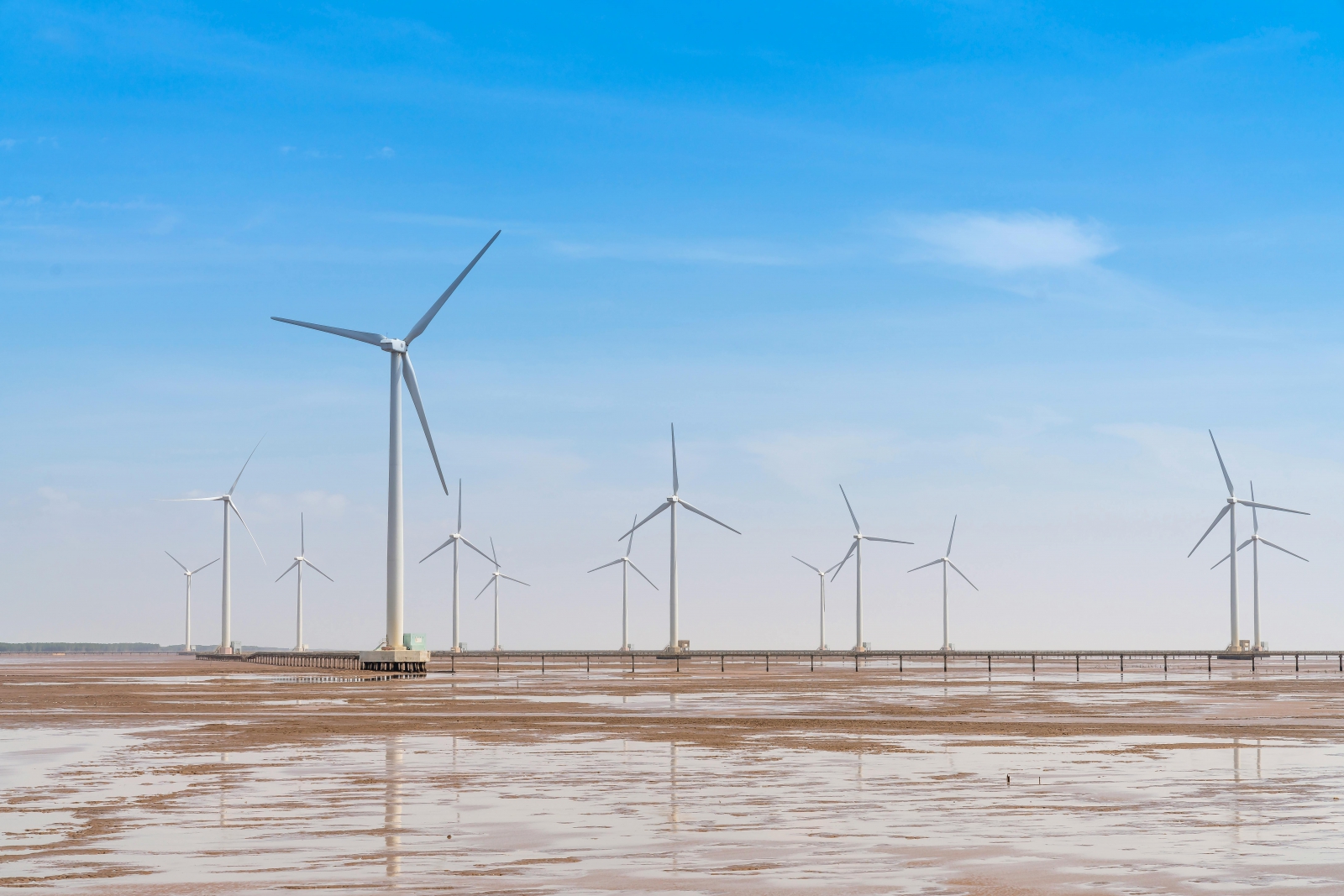
Indonesia targets 37 GW installed capacity of wind farms by 2060. (Photo: iStock)
The Indonesian government has proposed a revised Electricity Supply Business Plan (RUPTL), aiming to increase wind power capacity to 5 GW by 2030. This new target significantly exceeds the original plan but falls short of expectations set by the Just Energy Transition Partnership (JETP), which is seen as a setback for the country’s energy transition.
Indonesia plans major wind power Increase
Eniya Listiani Dewi, Director of New Energy, Renewable Energy, and Energy Conservation at the Ministry of Energy and Mineral Resources (ESDM), stated that the updated electricity supply plan serves as a development blueprint for 2025 to 2035. The plan targets 5 GW of wind power capacity by 2030 and aims to expand it to 37 GW by 2060.
Compared to the existing projection of 597 MW for 2030, the new target represents a eightfold increase, and it is more than 30 times the current installed wind power capacity of 152.3 MW.
Dewi noted that Indonesia has a wind power potential of 154.6 GW, including 60.4 GW onshore and 94.2 GW offshore, with much of this potential concentrated in eastern regions like Maluku, Papua, and Nusa Tenggara, accounting for about 40%.
The draft also suggests that these wind farms could serve not only for power generation but also as tourist attractions, similar to practices in Europe. Regions such as South Kalimantan, South Sulawesi, and the eastern and southern parts of Java have already garnered interest from tourists.
Slow phase-out of fossil fuel power plants, funding challenges
Despite plans to significantly boost wind power capacity, the issue of funding remains critical. According to the Climate Policy Initiative (CPI), Indonesia's renewable energy sector received an average annual investment of $2.2 billion between 2019 and 2021, falling far short of the $9.1 billion required to meet climate goals.
The funding gap for Indonesia’s energy transition is unlikely to be filled in the short term, especially since the $20 billion promised through JETP has not been fully secured due to the slow pace of phasing out coal plants. As of June this year, the total ongoing project funding through JETP amounted to only $144 million.
Currently, the newly set wind power target is lower than what was initially promised to JETP. According to the government’s original plan submitted to JETP, wind power capacity was expected to reach 8 GW by 2030 and 45 GW by 2060, making the new target seem inadequate.
Data from Bloomberg New Energy Finance indicates that in 2022, 80% of Indonesia’s electricity came from fossil fuels, while solar and wind energy accounted for just 0.3%. If the new target is achieved, the 5 GW of wind power would only represent 2% of the total electricity supply.
Resource: Reuters(1)、(2)、Bloomberg、Tanahair、Jakarta Globe


